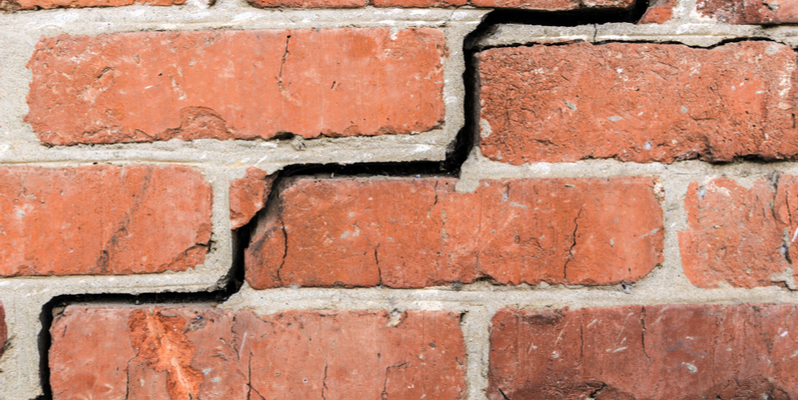If you’re looking at cracked or damaged masonry, it’s important to know that the damage will worsen without proper treatment. The key is to find out if your bricks need to be replaced or repaired. Luckily, there are four ways you can tell.
4 Ways to Tell if Bricks Need to Be Repaired or Replaced
#1. Can You Turn the Brick Around?
If the exterior of the brick is worn away, it might be possible to remove the brick and then turn it around the other way in the wall, showing off the backside of the brick. This is a good trick when trying to preserve a historic building as it keeps bricks the same throughout the structure and maintains more originality.
#2. Is the Brick Damaged Beyond Repair?
Bricks that are badly worn and crumbling at a significant depth may need to be completely replaced.
#3. Is the Structure Unstable?
If the entire structure is showing signs of instability, for instance if it is leaning, bowing or otherwise unstable, it may be in your best interest to replace the entire wall.
#4. What is the Cause of the Damage?
A lot of different things can lead to masonry damage, knowing what is causing the damage on your bricks will play a big role in knowing if you need to repair or replace the structure. First and foremost, you’ll need to address the underlying issue. Otherwise the same problem will resurface soon after you conduct repairs.
The only way to know for sure if you need to replace or repair bricks is to have a professional out to assess the damage.
How Long Does Brick and Mortar Last?
Brick, stone or block structures can last for 100+ years. Some of the oldest buildings in Toronto are masonry units. Yet, in between this time it’s important to take care of proper maintenance, like fixing mortar joints as needed. Mortar joints usually last around twenty to thirty years, but this can fluctuate greatly depending on local weather conditions and other exposures.
Fixing Mortar Before Brick
Tuckpointing is the process of fixing the mortar between bricks, an important step to take to avoid brick damage. Mortar is designed to take on the brunt of damages before spreading the bricks. Yet, if you wait too long and the mortar becomes too damaged, bricks will start to loosen in the wall and suffer damage of their own. Once the brick or stone becomes loose, it’s usually too late to make repairs via tuckpointing.
Look for Early Warning Signs
The best way to prevent big repairs or rebuilds from popping up? Catch problems early on before they have a chance to balloon into something larger. Some of the most common warning signs include water damage, crumbling mortar, or cracks in the mortar. The key is to fix mortar before the damage moves into brickwork.
There may also be signs inside of your home that indicate an issue with masonry, such as uneven floors, or cracks in the slab of your driveway or basement. It’s equally important to take note of any windows or doors that no longer open or close properly. Also, be on the lookout for cracks running along plaster or drywall on the interior of your home.
Small cracks or holes in mortar or bricks are another clear sign that repairs are needed. Otherwise, water, pests and other unwanted elements can seep inside and cause additional damages.
Repairing & Replacing Bricks in Toronto
From newer homes to historic buildings, Turnbull Masonry has the experience to tackle any job with ease. We are here to help you find the most cost effective and long-lasting solution for masonry. Contact us today to learn more.

